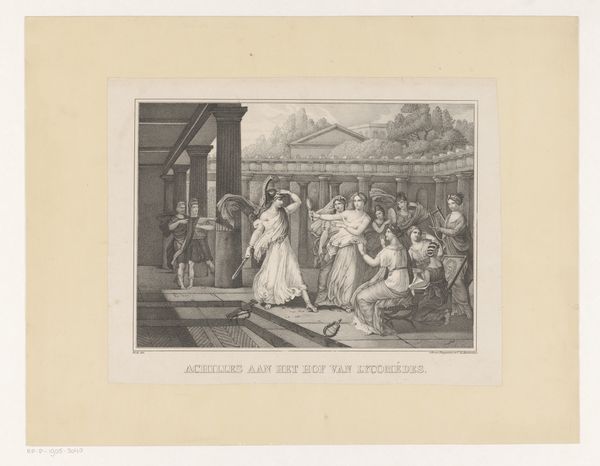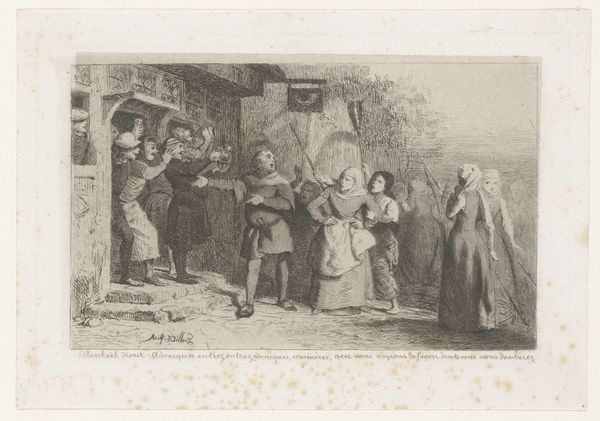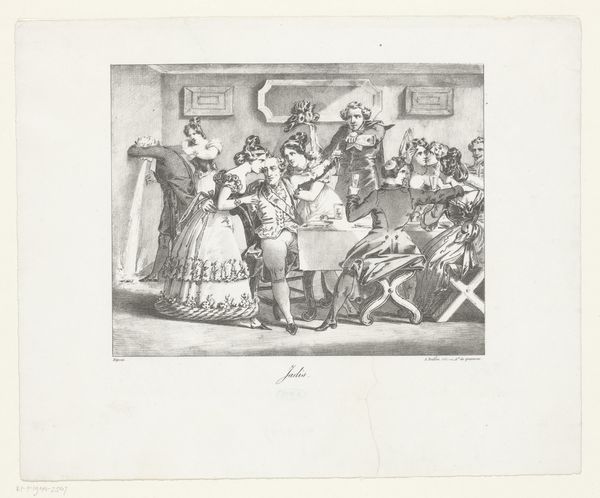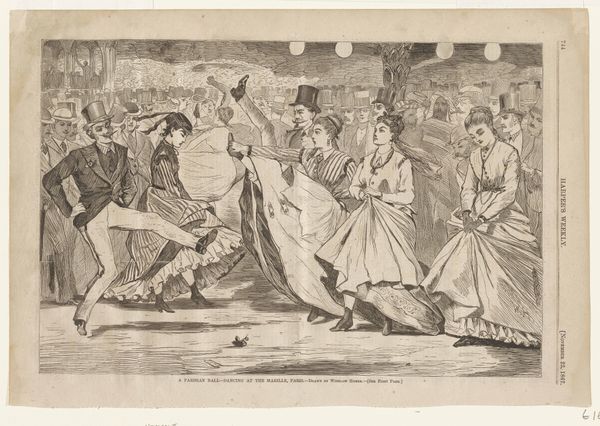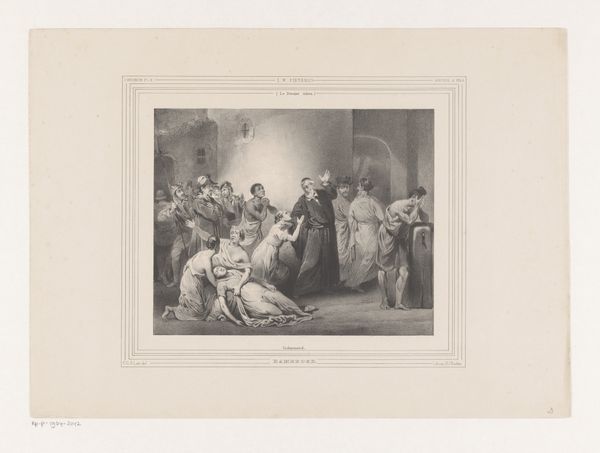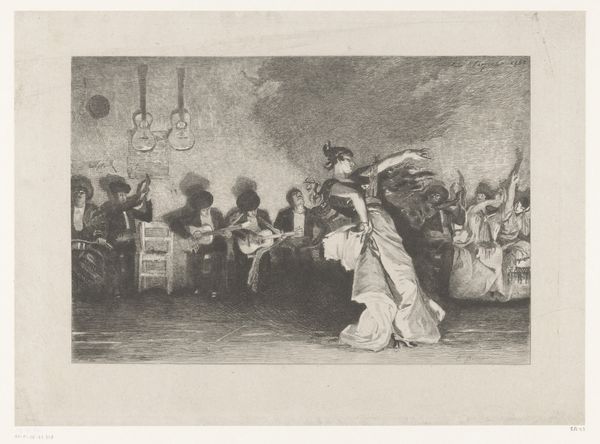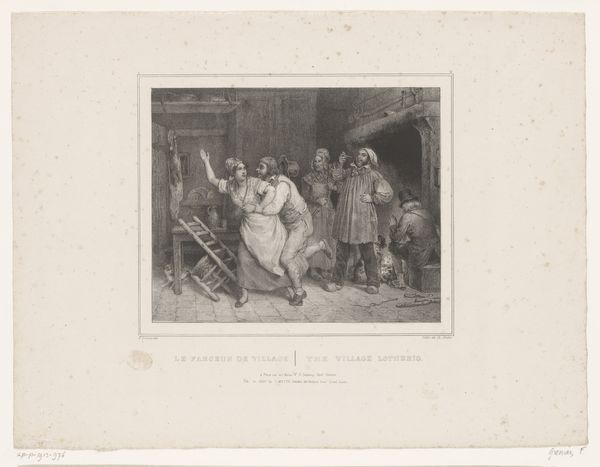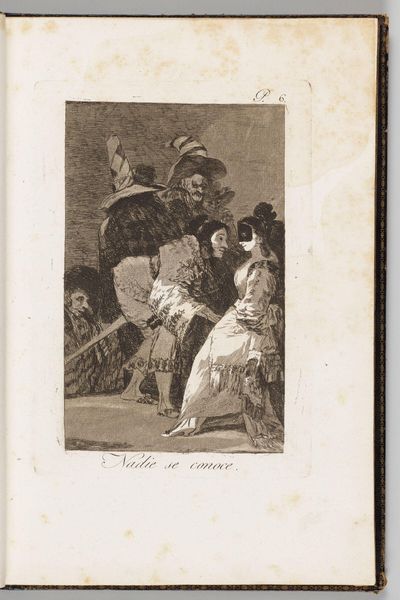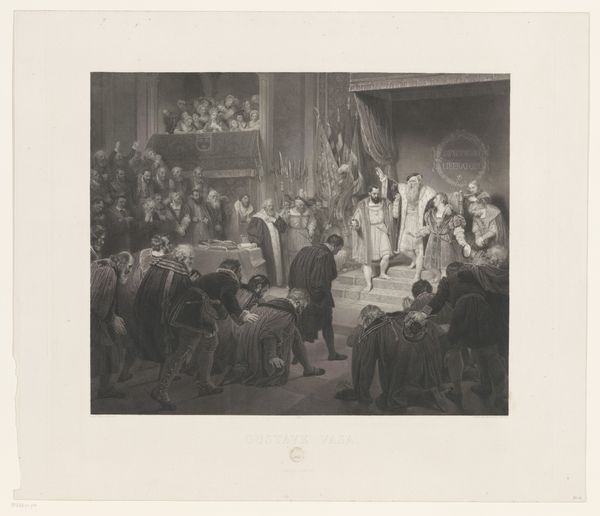
Dimensions: 285 mm (height) x 401 mm (width) (billedmaal)
Curator: Right now, we are looking at a lithograph by Adolph Kittendorff called "Dans i en krostue," which translates to "Dance in a Tavern." It was created in the 1880s and is held at the SMK, the National Gallery of Denmark. Editor: What strikes me is how animated it is for a lithograph. It's all swirling movement and jovial chaos, like a snapshot of a genuinely good time breaking out in a stuffy place. The room looks packed! Curator: Genre paintings like this, especially as prints, became incredibly popular in the 19th century. They offered glimpses into everyday life and often reflected social commentary. How do you interpret the gathering here? Is it truly carefree? Editor: Well, observing the composition from a contemporary lens, I am thinking about gendered spaces and power dynamics. Note the women are actively dancing with their fans, while the men appear as more stationary figures along the wall—assessing and watching. What's the power relationship here? Curator: It's definitely there, though it can be misleading if only perceived by modern sensitivities. I think we should avoid interpreting them as wholly oppressed. These were the acceptable displays of social conduct—rules the dancers are actively participating in. What else are you seeing? Editor: I find myself wondering who exactly this gathering is depicting. Are these aristocrats slumming it, so to speak? Or is this how tavern owners romanticized these establishments in print? There's a theatrical quality about it. Everyone seems very aware of being observed, even by the artist. Curator: Exactly! By disseminating this kind of imagery through print, the artwork entered homes and collective cultural consciousness. They promoted certain social narratives while potentially obscuring others. This begs questions about how artists engage in socio-political commentary in art and who they are doing it for. Editor: This print underscores the role of taverns—historically positioned as places for people of various social stratifications to congregate, consume culture, negotiate work, and express dissenting views—sometimes even sparking social change! Food for thought... Curator: Yes, precisely. And the act of circulating imagery like this reinforces the imagined roles these establishments play, especially if experienced vicariously. Thanks, I have a fuller understanding of it now.
Comments
No comments
Be the first to comment and join the conversation on the ultimate creative platform.

